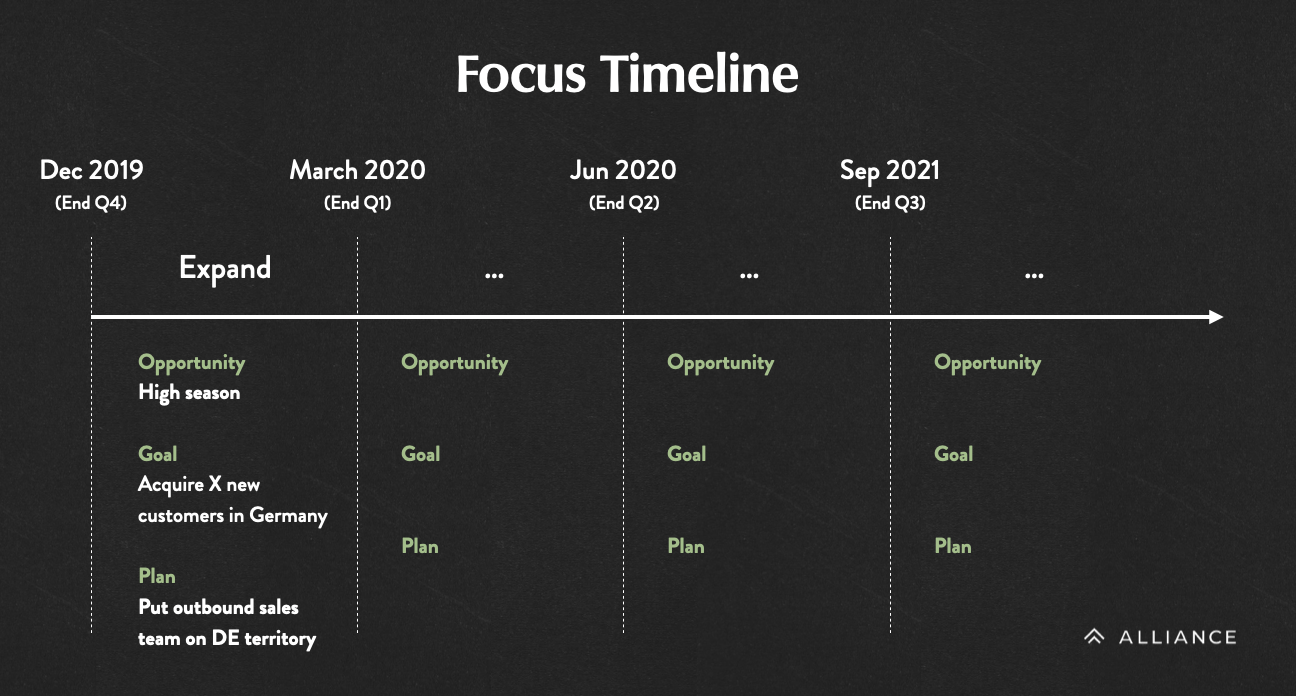Editor’s note: You may remember that recently we announced a partnership with Alliance and the renowned Vlerick Business School for an upcoming interactive masterclass designed specifically for marketing and growth teams working at European tech scale-ups. This article, written by Robin Geers, the founder and CEO of Alliance, and edited by tech.eu, is part of this partnership. In fact, this is the first piece in a series of stories with the goal of touching upon important topics before the five-week intensive masterclass begins. All credits for the practical insights in this specific post goes to one of the experts from the program: Adelina Peltea (VP Growth at Holded, former VP Marketing at Typeform).
In a startup or any other fast-moving company, being efficient is good, but being effective is more important. Working on the right thing at the right time is more important than doing something well that is unimportant or at the wrong time.
Additionally, people working in a company feel more motivated when they have clarity on the roadmap, and they get excited about it. It’s easy for people working on daily tasks to forget the underlying vision.
That’s why I’m happy to share Adelina Peltea’s (VP Growth at Holded) 3-step framework on how to run a business in a fast-paced environment, by tapping into three pillars: give people clarity on what’s ahead, structure teams to make things happen smoothly, and allow for agility.

Adelina developed and tried-and-tested this practical approach herself at Holded in 2020, and it worked well for them. Even throughout the economy shake-down caused by coronavirus — the method was agile, yet strategic enough to not need changes during these turbulent times.
Without further ado, here is her 3-step framework:
- Define a 1-year “focus timeline”, in a top-down fashion.
- Do a re-org to enable the teams to execute the focus timeline and be self-sufficient.
- Organise sprints, in a bottom-up fashion, for people so they can suggest projects for the current focus area, considering the latest knowledge and context.
This framework is about combining effectiveness and efficiency to help the startup succeed. It’s most suitable for startups who are already post-product-market fit and are in initial stages of building their acquisition engine or in the growth stage.
Step 1: Define a “focus timeline”
In startups, there are lots of challenges to solve, and you can’t do it all at once. You need to be clear on the prioritisation and the reasons behind it. That’s when you need a “focus timeline”.
A focus timeline is a list of challenges that will be tackled by the company, in a precise order, and with a clear definition of success (north star metrics). It’s about choosing the challenges to be solved, but not prescribing clear solutions. Defining a focus timeline works best for yearly horizons.
First, build the focus timeline in a top-down way by getting data-driven insights and listening to people from different corners of the company. Once you see and hear it all and you have a good understanding, it will be more clear what needs to be done and what doesn’t.
Then, you can work out different scenarios, combining financials and discussions with founders/investors, and get to a winning timeline.

Once you agreed upon a focus timeline, communicate it to the entire team. It’s important to realise that this communication needs to be done over multiple instances. As you go through the phases inside the timeline, do company presentations on where you are now, and what you have done and learned so far. Just keep it alive in everyone’s memory.
A focus timeline is also a great tool to help management (or anyone else) say NO to specific projects, to avoid getting distracted and trying to do everything all at once.
As you can see in the example above, you should also choose a north star metric for each stage, that reflects easily in one graph. Put it on a screen in the office and monitor if the actions are moving the needle. It’s important here to focus on leading indicators, not outcomes, as those might take a while to show.
Set the focus timeline when you start a new job in leadership. Spend time during the interviewing process to get to know the company and industry, and define a rough focus timeline as a proposal.
Setting the focus timeline early on is an excellent way to see if there is alignment between you and the rest of leadership. Of course, you can refine it after starting in the job and getting more info, but it can be a good alignment indicator beforehand.
It’s like in political elections; you have to present a proposal of what you will address when you apply.
Read more in the next posts of this series:
- Step 1: Define A Focus Timeline ⌛️ (this post)
- Step 2: Do A Re-Org 🏗
- Step 3: Organise Sprints 🏃♂️



Would you like to write the first comment?
Login to post comments